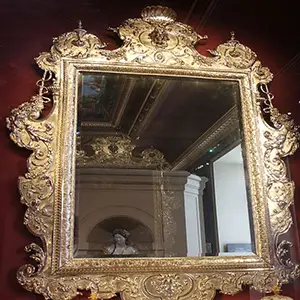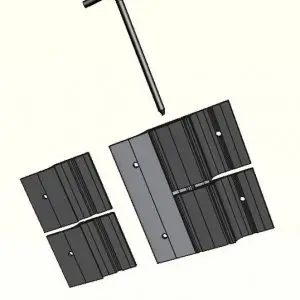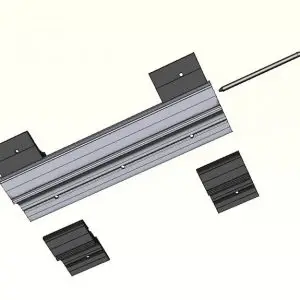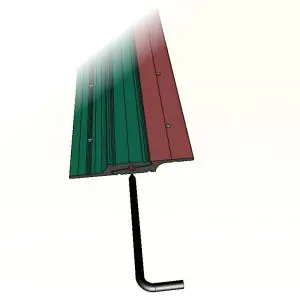Zinterlock kit to hang heavy mirror
Are you looking for a system to hang your large, heavy or valuable mirror ,securely on your wall? There is a simple Zinterlock solution for you which achieves a near-flush mount discreetly hidden from view, and as safe as can be.
Why use Zinterlock to hang your mirror?
You want your mirror to hang level (or square) and not be prone to change. Also, the mirror needs to stay on the wall if it gets knocked by something – or someone – falling against it.
Earthquakes pose a particular problem in many parts of the country. Consider how mirrors (and other large, heavy items) hanging on your wall can become a serious safety problem in a strong earthquake. So its very advisable to secure these onto the wall so they cannot fall, no matter how heavy the shaking gets!
Of course, you want to look at the mirror and not at whatever is holding it on to the wall. So, your mount needs to be very secure, long lasting, and hidden.
That’s where Zinterlock comes in. Check this video for how Zinterlock works
How to hang your mirror
Zinterlock cleats (or split battens) are perfect for securely hanging any large, heavy, fragile or valuable article on any wall. In the case of your mirror, you’ll probably be using some longer Zinterlock cleat(s) on the wall, matched with some short cleats on the mirror.
If you prefer, you can swap this around – long cleats on the mirror and shorter ones on the wall. Either way, the following steps apply.

First, measure the width of your mirror. The Zinterlock cleat(s) on the wall can be slightly shorter than the width of your mirror. If the mirror is more than about 400mm tall, you might want two cleats on the wall – upper and lower.
You’ll need to consider how much weight the fasteners into the wall can bear. It’s best if you can screw the cleat(s) directly into studs. However, if you’re using wall anchors make sure you allow enough of them over the length of the cleat to distribute the weight of your mirror. By the way, choose your anchors with care: as a very rough guide more than 10kg per anchor point is risky. Here are two useful links introducing different types of wall anchor. This brand of wall anchor is readily available from DIY shops.
Next, fasten short Zinterlock cleats (probably just 100mm or so long) to the back of the mirror frame. Use screws to fasten these such that they match to the wall mounted cleat(s). You’ll want two of these short pieces (one on each side) for each wall batten. As a rough indication, each matched Zinterlock mount will easily hold 50kg: Zinterlock as a rule is far stronger than you will need. So, the wall anchors and fasteners are generally more vulnerable.
For more security, insert Zinterlock locking pin(s) into one or more of the matched pairs. Because these stop the assembly from being separated, they will prevent the mirror from being lifted off the wall.
Gluing your mirror to Zinterlock?
An alternative to screwing the Zinterlock to the back of your mirror is to glue it. Choose a suitable adhesive to glue the Zinterlock to a backing board or even directly to the back of the mirror. Suitable adhesives such as Selleys Liquid Nails Mirror-Metal-Glass will not affect the silvering on your mirror, and will provide all the holding power required when bonding to the Zinterlock.



